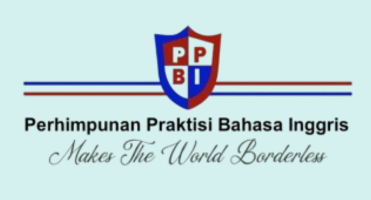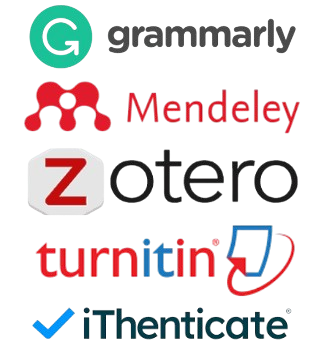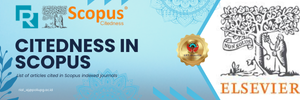The Implementation of Hybrid Learning Approach in English for Business Communication in Indonesian Vocational Higher Education
DOI:
https://doi.org/10.31963/rial-ej.v1i2.4282Keywords:
Hybrid Learning, Virtual case study, Online learning platforms, Indonesian Vocational Higher educationAbstract
This article investigates the implementation of hybrid learning in BusinessCommunication at the vocational education level. The study adopts a virtual casestudy approach utilizing digital narrative inquiry to collect data on teachers'strategies for hybrid learning aimed at enhancing students' businesscommunication performance. Findings reveal that one teacher successfullydeveloped a self-initiated hybrid learning model during explorations in this field.The teacher integrated traditional instruction with diverse online platforms likeMoodle, web-cloud video conferencing, Google Classroom, and social mediaplatforms such as Facebook and WhatsApp to teach English for businesscommunication. In contrast, other teachers demonstrated limited implementationof hybrid learning. Notably, the level of hybrid learning implementation wassignificantly linked to students' business English performance outcomes. Greaterutilization of hybrid learning strategies correlated with improved studentperformance in business communication. The research carries implications forpedagogy, underscoring the significance of employing diverse hybrid learningstrategies in English teaching.ÂReferences
Alakarash, H., & Razak, N. (2020). The Asian ESP Journal. The Asian ESP Journal, 16(4), 6–21.
Albers, B., & Pattuwage, L. (2017). Implementation in Education Findings from a Scoping Review
Prepared for Evidence for Learning (E4L) Implementation in Education Findings from a
Scoping Review. www.cei.org.au
Anas, I., Amansyah, F., Musdariah, A., & Irmawati. (2020). Technological and pedagogical
considerations in supporting electronic self-access language learning (e-sall): In-person
learning practice in the time of crisis. SiSal Journal, 11(3), 128–134.
https://doi.org/10.37237/110303
Angadi, G. R. (2016). Student-teachers perceptions towards Blended Learning Approach in
Critical Understanding of ICT in Education. International Journal of Research in Economics
and Social Sciences (IMPACT FACTOR – International Journal of Research in Economics &
Social Sciences, 6225(6), 77 = 82. http://www.euroasiapub.org
Barhoumi, C. (2015). The Effectiveness of WhatsApp Mobile Learning Activities Guided by
Activty Theory on Students’ Knowldege Management. Contemporary Educational
Technology, 6(3), 221–238.
Bath, D., & Bourke, J. (2010). Getting Started with Blended Learning. In Griffith Institute for
Higher Education Phone: Griffith Institute for Higher Education.
https://doi.org/10.4018/978-1-61350-147-4.ch023
Boyinbode, O. K., Agbonifo, O. C., & Ogundare, A. (2017). Supporting Mobile Learning
with WhatsApp based on Media Richness. Circulation in Computer Science, 2(3), 37–46.
https://doi.org/10.22632/ccs-2017-251-89
Correia, M. (2016). An Investigation of Teacher and Administrator Perceptions of Blended
Learning: Implementation, Student Learning, and Professional Development. Western
Connecticut State University.
Dvorak, R. (2011). Moodle for Dummies (K. Kirschner (ed.); 1st ed.).
Embi, M. A., Hussin, S., & Panah, E. (2014). Flipped Learning Readiness among Graduate
and Postgraduate Students in UKM. In Blended & Flipped Learning: Case Studies in Malaysian HEI.
Finger, G., & Trinidad, S. (2002). ICTs for learning: An overview of systemic initiatives in
the Australian States and Territories. Australian Educational Computing, 17(2), 3–14.
Futch, L., Thompson, K., Howard, W., & DeNoyelles, A. (2016). “ Comfort †as a Critical
Success Factor in Blended Learning Courses. Online Learning, 20(3), 140–158.
Garrison, D. R., & D.Norman, V. (2008). Blended Learning in Higher Education Framework,
Principles,and Guidelines (Fiirst). JOSSEY-BASS.
Garrison, D. R., & Kanuka, H. (2004). Blended learning: Uncovering its transformative
potential in higher education. Internet and Higher Education, 7(2), 95–105.
https://doi.org/10.1016/j.iheduc.2004.02.001
Ghavifekr, S., & Rosdy, W. A. W. (2015). Teaching and Learning with Technology:
Effectiveness of ICT Integration in Schools. International Journal of Research in Education
and Science, 1(2), 175–191. https://doi.org/10.21890/ijres.23596
Graham, C. R. (2006). Blended learning systems: Definition, current trends, and future
directions. Handbook of Blended Learning: Global Perspectives, Local Designs, January 2006,
–21.
Guzacheva N. (2020). Zoom Technology as an Effective Tool for Distance Learning.
Pedagogical Science, 6(5), 457–460.
Innes, M., & Wilton, D. (2018). Guide to Blended Learning. In The Commonwealth of Learning
(COL) (Issue 1). The Commonwealth of Learning (COL).
Lestari, A. S. (2016). Analysis of the Implementation of e-Learning in Stain Sultan
Qaimuddin Kendari Southeast Sulawesi. Inteernational Journal of Information and
Education Teachnology, 6(6), 453–456. https://doi.org/10.7763/IJIET.2016.V6.731
Maulina, M., Ladjagang, R., Nasrullah, R., M. Esteban Jr, A., Hastianah, H., & Herianah, H.
(2022). Conceptualizing Research Methods Used in Teaching Listening Skill Studies
Using Social Media and Technological Tools. Journal of Education and Teaching (JET),
(1), 69–83. https://doi.org/10.51454/jet.v3i1.140
Purnomo, W., Syafitri, D., & Raflesia, C. (2022). The Role of Blended Learning Model in
Learning for Students. LITERATUR: Jurnal Bahasa, Sastra Dan Pengajaran, 3(1), 54–70.
https://doi.org/10.31539/literatur.v3i1.4999
Şahin Kızıl, A. (2014). Blended instruction for EFL learners:Engagement, learning and
course satisfaction. The JALT CALL Journal, 10(3), 175–188.
Sanpanich, N. (2021). Investigating Factors Affecting Students’ Attitudes toward Hybrid
Learning. REFLections, 28(2), 208–227.
Sharma, V. (2014). Blended Learning – a Boon or Bane for Teacher-Learner. Indian Streams
Research Journal, 4(4), 1–7.
Subandoro, P. S., & Sulindra, E. (2019). Optimizing Collaborative Learning: Using Google
Classroom in Business English Correspondence Class. VOCATIO: Jurnal Ilmiah Ilmu
Administrasi Dan Sekretaris, 2(1), 1–18. https://doi.org/10.1017/CBO9781107415324.004
Sukmawati, S., & Nensia, N. (2019). The Role of Google Classroom in ELT. International
Journal for Educational and Vocational Studies, 1(2), 142–145.
https://doi.org/10.29103/ijevs.v1i2.1526
Sulisworo, D., Agustin, S. P., & Endang, S. (2016). Cooperative-blended learning using
Moodle as an open source learning platform. Int. J. Technology Enhanced Learning, 8(2),
–198.
Uluçınar, S., Şafak, S., & Dilek. (2017). Flipped classroom model in education. International
Journal of Social Sciences and Education Research, 3(5 S), 1904–1916.
https://doi.org/10.24289/ijsser.348068
Downloads
Published
Issue
Section
License
Copyright (c) 2023 Research and Innovation in Applied Linguistics-Electronic Journal

This work is licensed under a Creative Commons Attribution-ShareAlike 4.0 International License.
Authors who publish with this journal agree to the following terms:
Authors who submit article to this journal, agree to grant the copyright to Research and Innovation in Applied Linguistics (RIAL) under a Creative Commons Attribution License: Creative Commons Attribution-ShareAlike 4.0 International License.
![]()
For collaborative works, authors should ensure that they have secured the necessary permissions from co-authors to submit the manuscript and grant the rights outlined in this policy.
Archiving and Access:
RIAL upholds an open access policy, ensuring that articles are freely accessible to a global audience upon publication. Authors' work will be archived electronically, facilitating its long-term availability and visibility.









.png)


